THE SHOW DOWN: Veneer core vs solid wood built-ins?
We are avid readers and considering getting built-ins that need to be sturdy enough to house tons of books. I assumed they would be solid wood, but a contractor who came to give an estimate says nobody makes built-in of solid wood. He uses veneer core. This is new to me and I am wondering what others think of veneer core vs solid wood. Here are some parameters:
1. They will be painted to match the walls. We want simple trim to match the current trim in our house. All shelves, no cabinets.
2. We live in an 1860s rowhouse and tend to use historic materials in our renovation work: In our new kitchen we used salvage marble counter tops and had real plaster walls put in instead of dry wall.
3. I worry that veneer core will not only feel cheesy and fake, but I don't like the idea of all the chemicals that go into manufactured plywoods and veneer, though the guy said he can use formaldehyde free. (I went through chemo a few years back and ever since different bonding agents and vocs give me allergies - very strange.)
4. Our house is a constantly shifting structure: Floors slant, and the walls, doors, floor boards, and random wall cracks expand and contract with the change of seasons. Would veneer core or wood would stand up better to these dynamic forces?
5. I see so many pictures of built-ins all over houzz. Am I looking mostly at veneer core and didn't know it? Help me out - What are the pros and cons? Will one or the other stand up better to the weight of loads of books?
Thanks in advance for your opinions and education!

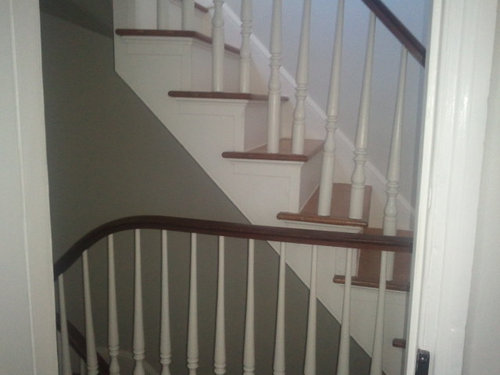
Comentarios (16)
sethelder530
hace 9 añosI just built a 6'x6' unit using 3/4" maple veneer plywood for the shelves and poplar for the front "trim". Painted them white and I think they look and function great. Strength is probably more dependent on how far the shelves span and how they are reinforced than anything else.Kendrah agradeció a sethelder530Kendrah
Autor originalhace 9 añosSethelder, Thanks for your input. What were the determining factors in why you chose to use veneer plywood for the shelves vs a solid wood? Is it usually just a cost factor or are there any other considerations?allan j grant and associates, architects
hace 9 añosHello, Carol -
It has been my experience that veneer core shelving can be stronger and certainly more stable than solid wood. Solid wood tends to expand and contract with humidity much more than engineered wood (which is what veneered core shelving is). The technology has advised to very sophisticated levels over the years and now also respects the demand for low or no VOCs.
In designing the book shelving, please do consider the overall span (length between supports - whether they be fixed end panels, sides of book cases, or some sort of adjustable support system) of the shelves. The longer the span, the more weight each shelf must bear. A good shelf length would be no more than 36". If the shelf material is to be 3/4" thick, then edging the shelf front edges with solid 3/4" thick wood material of a larger dimension (say, 1 1/2" or 2 1/4") will prevent shelves from bowing under full capacity loaded.
In the photo I have included illustrating some bookshelves within a wall of built-in cabinets, the shelf material is actually 3/4" thick, however, on the front edges of the shelves, I added 3/4" x 2 1/4" material for more physical strength as well as aesthetic substance. A good experienced cabinetmaker will know how to detail your shelves for the best material and stability.
Allan Grant, AIA
Chicago Architect
allan j. grant and associates . ARCHITECTS
325 west huron suite 515 chicago, illinois 60654
P: 312-943-5522 F: 312-943-0538 C: 312-560-5666
E: GrantArchitects@Gmail.com W:AllanJGrantArchitects.com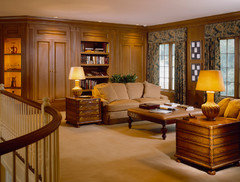 Kendrah agradeció a allan j grant and associates, architects
Kendrah agradeció a allan j grant and associates, architectsPPF.
hace 9 añosIf cost is not a concern, or spans are long, use solid wood. I've often used a mix, building the case from sheet goods, and shelving from solid stock.Kendrah agradeció a PPF.sethelder530
hace 9 añosI chose the plywood for several reasons
1. Cost
2. It is already flat, smooth, and defect-free, so it takes very little prep work.
3. I was planning to paint, so I wasn't concerned with wood grain appearance.
4. I was planning short, wide shelves.Kendrah agradeció a sethelder530Kendrah
Autor originalhace 9 añosÚltima modificación: hace 9 añosThanks for such detailed responses. I am learning a lot. Here is the bid the contractor sent. I am curious what others think of his construction details.
Note, I specified I wanted Ben Moore Natura because of no VOC (it is what is used in the rest of our house). He says he only paints with a certain kind of spray on paint that is very fumy so he would leave them unpainted and have my house painter paint them instead. My house painter is meticulous, so I suppose that is fine.
Also, I expressed a desire to have some of the weight transferred to the brick party walls so the floors are not taking all of the weight, hence his note at the bottom about lumber. Is this an appropriate solution?
****
"Contractor will build and install one built-in bookcase third-floor 79”x91”x10” Contractor will manufacture bookcases unfinished without paint or stain. Bookcase bottoms, sides and tops will be constructed out of ¾” veneer core material. Back of bookcase will be constructed out of ½” veneer core material. All shelving will be straight flat ¾” veneer core material. Baseboard of bookcase will match existing baseboard throughout room. There will be three 3” fluted dividers placed on front of bookcase. One on each wall and one center. There will be one flat header piece tying front of bookcase to ceiling. This bookcase unit will be constructed wall to wall and ceiling to ceiling without any cracks or crevices. All wood products for this project are made in the United States. Contractor will attempt to hang bookcase with minimum weight partially bearing on to floor. Contractor will concrete bold 2 x 2 lumber onto brick party wall and fasten back of bookcases to 2 x 2 lumber.sethelder530
hace 9 añosI don't see any mention of what will happen to the front edge of the shelves. There should be a 2" or so piece of wood attached to the front lip to help with strength and appearance like Allan J Grant says above. You don't want the cut edge of the plywood exposed.Kendrah agradeció a sethelder530PPF.
hace 9 añosIt looks like you are planning for a single center divider, making the shelves about 38" wide. You also seem concerned about weight, making me believe these will be used for books, and not just lightweight display objects.
38" is a wide span for books, so consider 2 dividers to bring the shelf down to about 25".
Will the shelving be fixed or adjustable?
I also suggest specifying hard maple for all solid wood. It's hard, strong and paints well.Rusty Empire
hace 9 añosFind a carpenter, not a contractor, who agrees with your preference for solid wood and who will build something of quality to last for years to come.River Valley Cabinet Works
hace 9 añosÚltima modificación: hace 9 añosI believe Columbia Forest Products has converted their complete line of plywood to Pure Bond, a formaldehyde - free adhesive. Veneer is fine if it is domestically produced first quality. I have done two walls of a home office with plywood, the caveat being I used 1" thick plywood for the shelves and a solid hardwood edging.havingfun
hace 8 añosMy problem is the depth of the shelves, I unfortunately am not an expert, but 10" is not very deep, it seems you can get premade for that,out of same material for very cheap. unless you are saving only paperbacks, that sounds like it could be too shallow. I too have many books, my 16" plywood, fiberboard what ever finally gave up the ghost after 30 years. Lucky me got 19 1/4" on Craig's for $40. So if i were outlying for handmade, i would definitely want much deeper. Actually with all the input, i am feeling this man might not be your best choice?
ab2021
el último mesHello everyone, I came across this post while searching for information on building a bookcase. We are commissioning a veneer solid plycore bookcase with lower cabinets; all of which will be painted later. The dimensions of the opening are 9.2ft in height, 9ft in width, a9nd 1.5ft in depth. Although this post is quite old, I'm hoping to get some guidance on the costs (California) for building something like this (excluding the cost of painting). Also, regarding the paint job, would it be better to have it sprayed on the premises after installation or in the shop before installation? And how much should this cost? Thank you in advance for your help!

Volver a cargar la página para no volver a ver este anuncio en concreto
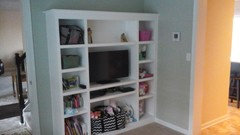
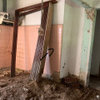
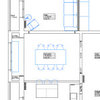

Al Fortunato Furnituremaker